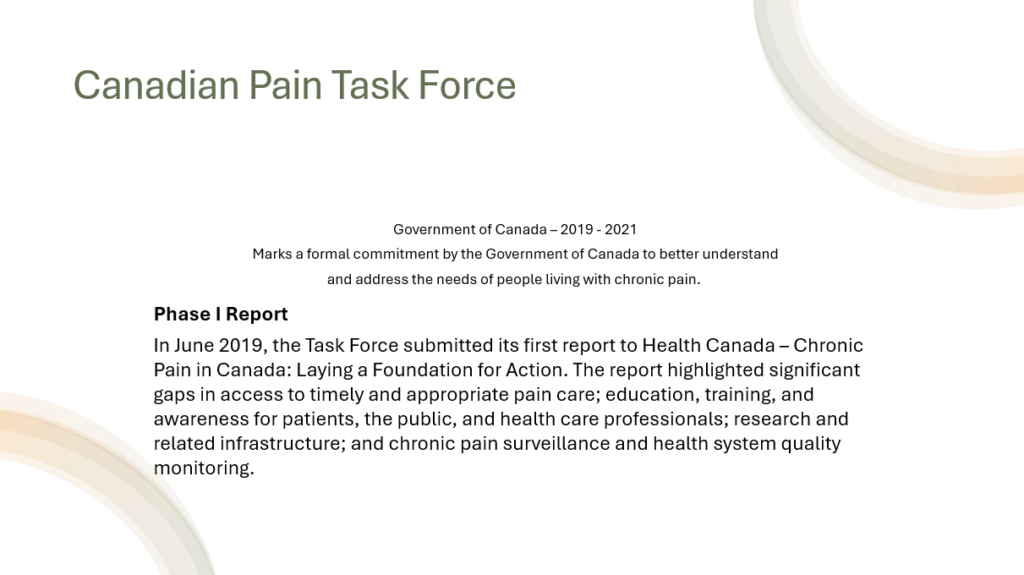Pain in Canada
Pain is one of the primary reasons Canadians visit a healthcare professional with 1 in 5 persons suffering from chronic pain at any time, yet this symptom/condition remains not well managed in healthcare generally. The Canadian Pain Task force wrote three reports that outlined the current gaps in healthcare for treatment of persons with pain.

Your Pain
The quality and significance of pain itself is often overlooked during assessment for musculoskeletal causes. There are a lot of things we can blame for the pain you’re having, including posture, fascia, movement, lack of movement, diet, thoughts, feelings, and a host of other reasons. But having so many reasons for the same pain only confirms the significant gaps found in education and knowledge for mechanisms and management that have been found.
If your primary complaint is pain, I provide a pain assessment that can reveal important information about the issue you’re having and the path to recovery.
How a Pain Assessment can Help
General muscle aches and pains are common experiences for a lot of different reasons, and most often resolve on their own. When pain persists for longer than expected, starts to increase with activity, or when areas become more sensitive to touch there may be underlying issues that require further investigation. When pain is chronic, widespread, and frequently moves from one place to another or increases with activity, modifications to treatments may be beneficial.
Common presentations like low back pain, heel pain, and hip pain are often classified using broad diagnosis like non-specific back pain, plantar fasciitis, and sciatica for which standard conservative treatments apply. When those treatments don’t work, I evaluate the pain, taking into account the location, the variability, the quality, and any changes in sensation over time in the context of relevant health history information including scans or other investigations.
A pain assessment is comprehensive and includes any possible mechanism of injury; location and relationship to movement or rest; length of time and response to any treatments; quality of the pain and any aggravating or relieving factors; and how the pain is affecting your day to day life. This information can then be used to direct appropriate treatment and set goals for recovery, or as information for you and your doctor to take those next steps in investigation, diagnosis, and treatment.

